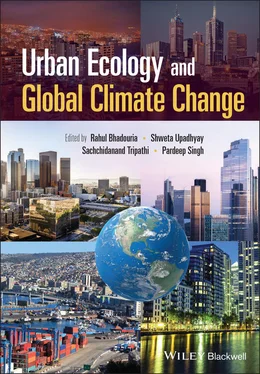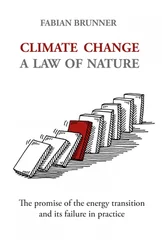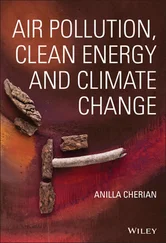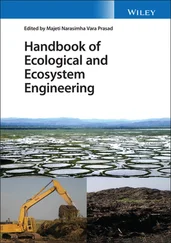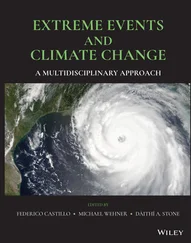Urban Ecology and Global Climate Change
Здесь есть возможность читать онлайн «Urban Ecology and Global Climate Change» — ознакомительный отрывок электронной книги совершенно бесплатно, а после прочтения отрывка купить полную версию. В некоторых случаях можно слушать аудио, скачать через торрент в формате fb2 и присутствует краткое содержание. Жанр: unrecognised, на английском языке. Описание произведения, (предисловие) а так же отзывы посетителей доступны на портале библиотеки ЛибКат.
- Название:Urban Ecology and Global Climate Change
- Автор:
- Жанр:
- Год:неизвестен
- ISBN:нет данных
- Рейтинг книги:4 / 5. Голосов: 1
-
Избранное:Добавить в избранное
- Отзывы:
-
Ваша оценка:
- 80
- 1
- 2
- 3
- 4
- 5
Urban Ecology and Global Climate Change: краткое содержание, описание и аннотация
Предлагаем к чтению аннотацию, описание, краткое содержание или предисловие (зависит от того, что написал сам автор книги «Urban Ecology and Global Climate Change»). Если вы не нашли необходимую информацию о книге — напишите в комментариях, мы постараемся отыскать её.
Urban Ecology and Global Climate Change
Urban Ecology and Global Climate Change — читать онлайн ознакомительный отрывок
Ниже представлен текст книги, разбитый по страницам. Система сохранения места последней прочитанной страницы, позволяет с удобством читать онлайн бесплатно книгу «Urban Ecology and Global Climate Change», без необходимости каждый раз заново искать на чём Вы остановились. Поставьте закладку, и сможете в любой момент перейти на страницу, на которой закончили чтение.
Интервал:
Закладка:
1.2.1.1 Urban Heat Islands
Modifications of the physical environment by the built structures during the process of urbanisation impede the energy distribution and composition of gases in the near‐surface. It alters the microclimatic conditions by modifying the thermodynamics of the urban ecosystems which resulted in 2–5 °C higher ambient temperature than the surroundings (countryside/rural) areas (Phelan et al. 2015; Jaganmohan et al. 2016; Vasishth 2015; Duffy and Chown 2016). Such alterations in local and regional climatic conditions (temperature dynamics) by the urban infrastructures lead to the UHI effect (Dallimer et al. 2016; Zhou et al. 2017; Hu et al. 2019). The UHI effect is one of the most prominent human‐made climatic phenomena in the urban ecosystems and has considerable ecological significance (Gaston et al. 2010; Akbari and Kolokotsa 2016; Yu et al. 2017). The UHI effect leads to the alteration of local and regional climatic conditions, impedes with the wind flows, and turbulence, related with shifts in cloud formation and precipitation, air pollution, and higher greenhouse gas (GHGs) emission (Seto and Shepherd 2009; Gaston et al. 2010). The increase in air pollution, heat stress, water quality, food security, and disparity in ecosystems services due to the UHI effects further affect the health and comfort of the urban inhabitants, thus, have adverse social, economic, and ecological impacts (Chang et al. 2016; Wong et al. 2016; Battles and Kolbe 2019). Moreover, UHI effect is further expected to contribute in the global climate change by increasing the GHGs (particularly CO 2) emission from the urban areas (Rosenzweig et al. 2010), and in response, the UHI effect's impact may further intensify in most of the cities (Chapman et al. 2017). However, the magnitude of the UHI effect depends on several local and regional factors such the latitude, weather and climatic conditions, diurnal conditions, rainfall, surrounding ecology, population and culture of the city, and the urban planning (Zhao et al. 2014; Vasishth 2015). For example, the increase in temperatures due to UHI effects during winter at higher altitudes, and during summer at lower altitudes may decrease and increase the costs of air‐conditioning, respectively (Vasishth 2015). Thus, the UHI effects may have variable responses depending on the location of the urban area and it needs to be explored further under the changing environmental conditions.
1.2.2 Urban Vegetation
Urbanisation provides a unique habitat for vegetation growth. Urban vegetation (tree, shrub, or ornamental plants) is comprised of both native and exotic species (Cubino et al. 2021). Two major processes are involved in the growth of urban vegetation, viz. cultivated vegetation growth which represents the plants that are introduced and managed by the urban inhabitants, and spontaneous vegetation growth which have been established and colonised without the human‐assistance (Cubino et al. 2021). Vegetation composition of the urban areas even differs at small scales depending on the several social factors (Čeplová et al. 2017). Introduction and cultivation of plants, especially ornamental or exotic plants for their aesthetic values by the urban inhabitants hold a crucial significance in current scenario. Exotic plants constitute a major portion of the urban vegetation; however, their contribution to the functioning and diversity at the socio‐ecological scales have been less explored (Cook‐Patton and Agrawal 2014; Pearse et al. 2018; Cubino et al. 2021). Most of the exotic species present in the urban areas are ornamental plants introduced intentionally by the humans (Čeplová et al. 2017; Lososová et al. 2018). Due to suitable environmental (heterogeneous) conditions or positive anthropogenic interferences (fertilisation and irrigation at regular intervals) in the urban areas, exotic plants have substantial scope to establish and colonise (Lososová et al. 2018). Human‐induced dispersal of the plant species in the urban areas contributes to the plant distribution and community composition (Møller et al. 2012; Lososová et al. 2018). Moreover, local fauna and their preferences for the fruits/flowers also contribute to the biodiversity of the area. For example, the preference of frugivorous birds affects the dispersal of fleshy‐fruited plant species in the urban areas (Møller et al. 2012). Moreover, birds help in seed dispersal of ornamental (exotic) trees from the gardens to the nearby natural ecosystems, thus, may facilitate plant invasion (Milton et al. 2007). Thus, exotic plants can be a major cause of ecosystem imbalances when the sufficient source of seeds/propagules and its dispersal agents are present in the nearby areas (Rai and Kim 2019).
Vegetation, particularly trees, plays a crucial role in maintaining the harmony in the urban ecosystems (Tigges et al. 2013). For example, trees store sufficient amount of carbon (C) and help in maintaining the overall C‐pool of the urban ecosystems (Davies et al. 2011). Urban ecosystems have sufficient potential to store C in their above‐ and belowground components (Hutyra et al. 2011; Nowak et al. 2013), even in dense urban areas (Mitchell et al. 2018). Urban areas have abundant shade trees (recreational purpose), trees grown for hazard removal, or exotic trees, all have potential to store substantial amount of C in their vertical structures. However, C‐density of the urban areas varies at spatio‐temporal scales (Mitchell et al. 2018; Upadhyay et al. 2021). Detailed view on the urban C‐stocks and their ecosystem services have been highlighted in the latter part of the chapter.
1.2.3 Urban Metabolism
The urban areas can be considered as an organism where consumption of materials, flow of energy and information, and waste generation (as end‐products) are the common processes occurring at various spatio‐temporal scales (Liu et al. 2013; Vasishth 2015; Verma et al. 2020a). These processes not only occur within a city but also affect the environment beyond the borders of the city, as like the natural organisms where different cells and tissues interact and involve in the metabolic processes and excrete the wastes outside the cell/body (Liu et al. 2013; Verma et al. 2020a). To understand the concept of material and energy supply for the functioning of the cities and the resultant waste (pollutants) generation in the urban ecosystems, the concept of urban metabolism has emerged (Restrepo and Morales‐Pinzon 2018). The concept was first proposed by Wolman (1965), who believed that processes occurring in the urban systems are analogous to that occurring in the metabolic processes of the living organisms. This approach helps in quantifying and identifying the movement of energy and materials as well as management of the environmental problems in an urban ecosystem (Wang et al. 2021). Thus, the research focus has now been shifted from quantifying resource consumption and environmental impacts to identifying and analysing the internal processes and the mechanisms involved in the outcomes of end‐products. Urban metabolism approach is getting wider attention of the urban ecology researchers as it helps in simulating the material flows and managing the environmental problems at different spatio‐temporal scales (Wang et al. 2021). In a CiteSpace analysis, Wang et al. (2021) identified the research trends in the urban metabolism. They found that now research communities are focussing on different micro‐ and macro‐scales in the urban areas such as by differentiating the central urban areas from the suburbs and rural areas to refine the results from the urban systems. Moreover, developing nations and the developing or less explored cities are being recognised as the new objects for the research, as several case studies are already available from the cities from the developed nations. In addition, future research should integrate the role of developing economies and the climate change phenomenon for exploring the urban metabolism at different scales (Wang et al. 2021). In the next sections, an insight has been given on the climate change and its impacts on the urban ecosystems. Moreover, the adaptation mechanisms of the urban ecology to the climate change has also been highlighted in the later sections.
Читать дальшеИнтервал:
Закладка:
Похожие книги на «Urban Ecology and Global Climate Change»
Представляем Вашему вниманию похожие книги на «Urban Ecology and Global Climate Change» списком для выбора. Мы отобрали схожую по названию и смыслу литературу в надежде предоставить читателям больше вариантов отыскать новые, интересные, ещё непрочитанные произведения.
Обсуждение, отзывы о книге «Urban Ecology and Global Climate Change» и просто собственные мнения читателей. Оставьте ваши комментарии, напишите, что Вы думаете о произведении, его смысле или главных героях. Укажите что конкретно понравилось, а что нет, и почему Вы так считаете.
